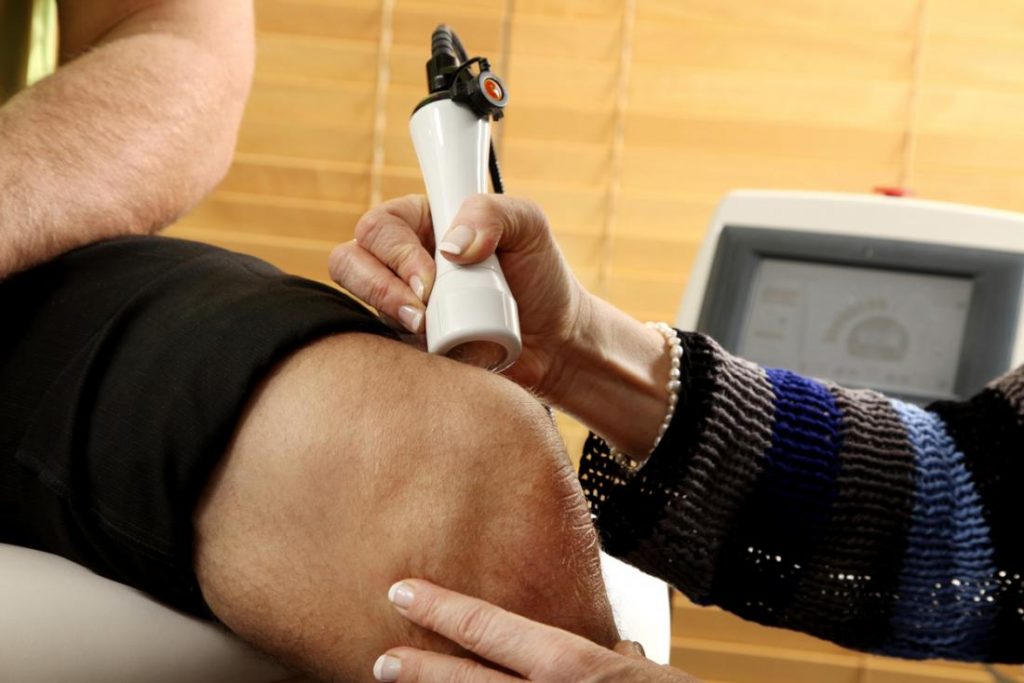
Pain around the joint that increases with weight bearing and movement and improves with rest is the commonest presenting symptom. It may be associated with morning stiffness and swelling of the joints. Clinical signs are tenderness, crepitus, joint effusion, decreased range of movement, valgus/varus deformity etc. X-ray shows decreased joint space, osteophytes formation and osteoporosis of subchondral bone.
Introduction
Osteoarthritis is commonest cause of knee pain and discussed here. Osteoarthritis is one of the commonest joint problems with 80% of general population of radiologic evidence of osteoarthritis by 65 yrs of age. The disease process starts by age of around 20 yrs and manifest around 40 yrs. More than 40% of sufferers have no radiological evident of osteoarthritis.
Pathogenesis
Exact etiology is not known. By chemical stress on articular cartilage and subchondral bone leads to wear and tear to these structures. Joint inflammation is very minimum compare to other arthritis and seen mostly in advanced disease. Pain of osteoarthritis may be due to following reasons:
- Trabecular micro-fracture
- Intraosseous hypertension
- Periosteal irritation
- Synovitis
- Stretching of join capsule and ligaments
- Muscle spasm
Central sensitization contributes considerably in producing pain.
Clinical features
Pain around the joint that increases with weight bearing and movement and improves with rest is the commonest presenting symptom. It may be associated with morning stiffness and swelling of the joints. Clinical signs are tenderness, crepitus, joint effusion, decreased range of movement, valgus/varus deformity etc. X-ray shows decreased joint space, osteophytes formation and osteoporosis of subchondral bone.
Treatment
I. Non-pharmacological therapy
- Reduction of obesity- loss of weight decreases load on the weight bearing joints and thereby retards the disease process.
- Quadriceps strengthening exercises- It is very useful for patients with osteoarthritis of knee. Strengthening of quadriceps muscle improves knee pain and function.
- Walking stick to be held in the opposite hand of the affected joint, reduces the load on the joint and is associated with decreased pain and improved function.
- Deformity stabilization- use of proper shoes for varus or valgus deformity transfers the load to the other compartment and retards the disease process.
II. Pharmacological therapy
- Paracetamol /acetaminophen should be used as the first line of therapy. The dosage recommended is form 1500 mg/day to a maximum of 4000 mg/day. Though paracetamol does not have anti-inflammatory property, still it provides good pain relief and osteoarthritis also does not show major inflammatory component.
- Those who do not get adequate relief with oral paracetamol should be given weak opioid like tramadol, codeine or dextropropoxyphene along with Paracetamol. There are several combinations of Paracetamol with opioids that should be tried and may be used for prolonged period without significant side effects.
- As next line of therapy NSAIDs can be tried. Ibuprofen in 1200 mg to 2400 mg/day is the first line NSAID. If the relief is not adequate, paracetamol can be added up to 4 g along with ibuprofen. These drugs should not be used for prolonged period.
- There are some diseases modifying agents that have generated a lot of interest. Some of them help in regeneration of cartilage and others inhibit degeneration. The agents which help in regeneration are chondroitin sulphate and gulcosamine sulphate. The agents which inhibit degeneration are essentially enzyme inhibitors like:
- Collagenase inhibitor- glycosaminoglycan polysulphuric acid
- Elastase inhibitor- pentosan polysulphate
- Metaloproteinases inhibitor- doxycycline
III. Interventions
- Intraarticular injections-patients with severe pain of knee, joint effusions and local signs of inflammation benefit by intraarticular injections of corticosteroids (triamcinolone 40 mg). This will be effective for short term period in reducing pain and increasing quadriceps strength. Some patients will require about 3 to 4 injections in a year, to using aseptic precautions, the infection rate is negligible. Sometimes mild flare up might be seen in joint inflammation following intraarticular injections, more than 3 to 4 injections in a year, should be considered for either joint lavage or surgery. Repeated injections (>4/year) are not recommended for the fear of damaging the cartilage of weight bearing joints.
- Tidal irrigation- The principle is washing off the inflammatory mediators, debris and breaking adhesions. Closed tidal knee irrigation with normal saline is done under local anaesthesia; this is as good as arthroscopic lavage. Saline is infused into the knee to distend the capsule and then is withdrawn. A total of 1 � to 2 litres is used for this kind of irrigation. Patients feel improvement in their joint mobility along with reduction of stiffness. This procedure has to be done under aseptic precautions.
- Arthroscopy- This will be useful in meniscal tear and other internal derangements.
- Surgery- patients having very severe symptoms should be considered for surgical options like tibial osteotomy, arthroplasty and joint replacement. Surgical options should be considered, once medical line of treatment fails. Surgical options should be delayed as much because the total joint arthroplasty might last between 10-20 years. Patients will have to modify his/her lifestyle to certain extent because of the ergonomics of replaced joint.
- Prolotherapy and Prolozone Therapy. Injection of tissue proliferants (like ozone, dextose etc.) inside the joint and around the joint reduces pain, inflammation and it strengthen ligaments. It is also claimed that it promote cartilage growth.
- Stem cell therapy- Like its usefulness in other degenarative diseases, it is useful in osteoarthritis of knee also.
- Pulsed Radio-Frquency Procedure (PRF)- This procedure is very effective procedure and was done first time in India. PRF is also effective in nociceptive pain by reducing inflammation.
